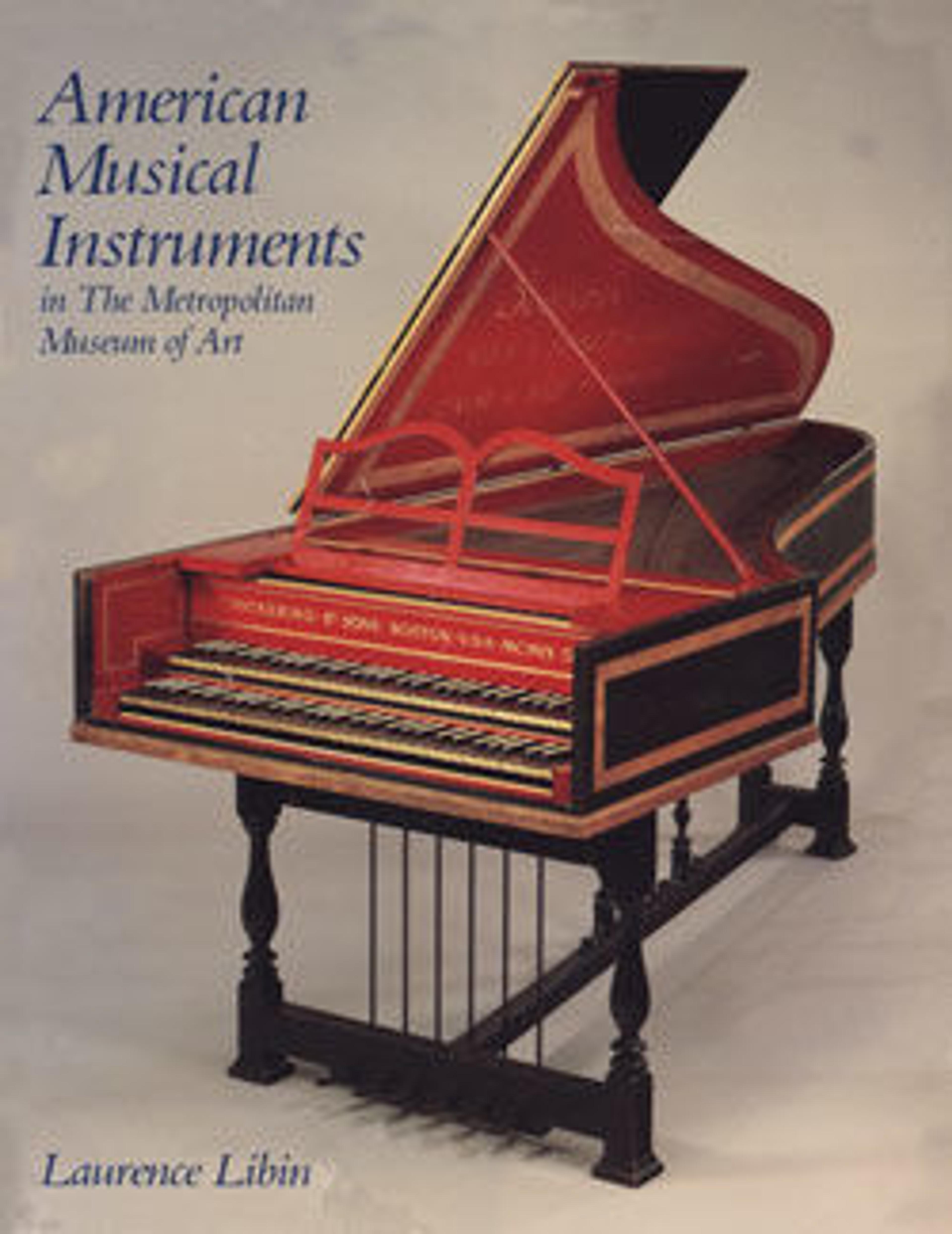Barrel Piano
When the crank is turned, pins on a rotating cylinder engage hammers that strike the strings, playing any of ten tunes, including "Yankee Doodle." At the same time, a bell rings and the articulated figures move in time to the music. One figure deposits coins in a trough. Shown with front string cover panel removed. Barrel pianos were developed in the early nineteenth century. One of the earliest builders was Joseph Hicks in Bristol, England, who had established a successful business by at least 1816 building both barrel pianos and barrel organs. Another member of the family, John, was soon active in London. It is probable that George Hicks, who lived in Brooklyn and built this barrel piano, was another relative.
Technical description: Dark-stained pine case with mahogany lid, enclosing a vertical pine soundboard and, below and in front of the soundboard, a crank-operated pinned barrel that activates felt-covered mahogany hammers striking 24 triple-strung piano notes (mainly diatonic with F#s, range c1-e3, lowest 2 notes c1 and f1) and 2 uncovered hammers striking brass bells; the crank, at front left side, also activates 10 painted articulated figures that stand on a tray above the barrel, surrounded by mirrors on 3 sides, one of the figures also controlled by a knob that causes it to lift a plate to collect coins; round door on right of case allows barrel and its support to slide out when figure tray is removed; barrel shaft protrudes from left side where a drop lever engages slots for 8 tunes; a lever above this moves hammer rail into playing position; pitch letters written in ink beneath the square tuning pins in maple pinblock at top of soundboard; brass brackets held carrying strap.
Technical description: Dark-stained pine case with mahogany lid, enclosing a vertical pine soundboard and, below and in front of the soundboard, a crank-operated pinned barrel that activates felt-covered mahogany hammers striking 24 triple-strung piano notes (mainly diatonic with F#s, range c1-e3, lowest 2 notes c1 and f1) and 2 uncovered hammers striking brass bells; the crank, at front left side, also activates 10 painted articulated figures that stand on a tray above the barrel, surrounded by mirrors on 3 sides, one of the figures also controlled by a knob that causes it to lift a plate to collect coins; round door on right of case allows barrel and its support to slide out when figure tray is removed; barrel shaft protrudes from left side where a drop lever engages slots for 8 tunes; a lever above this moves hammer rail into playing position; pitch letters written in ink beneath the square tuning pins in maple pinblock at top of soundboard; brass brackets held carrying strap.
Artwork Details
- Title: Barrel Piano
- Maker: George Hicks (British, born England 1818–1863 Brooklyn, New York)
- Date: ca. 1860
- Geography: Brooklyn, New York, United States
- Culture: American
- Medium: Wood, various materials
- Dimensions: Total H. 92.7 cm (36 1/2 in.), W. 43.5 cm (17 1/8 in.)
- Classification: Chordophone-Zither-struck-piano
- Credit Line: The Crosby Brown Collection of Musical Instruments, 1889
- Object Number: 89.4.2048
- Curatorial Department: Musical Instruments
More Artwork
Research Resources
The Met provides unparalleled resources for research and welcomes an international community of students and scholars. The Met's Open Access API is where creators and researchers can connect to the The Met collection. Open Access data and public domain images are available for unrestricted commercial and noncommercial use without permission or fee.
To request images under copyright and other restrictions, please use this Image Request form.
Feedback
We continue to research and examine historical and cultural context for objects in The Met collection. If you have comments or questions about this object record, please contact us using the form below. The Museum looks forward to receiving your comments.
